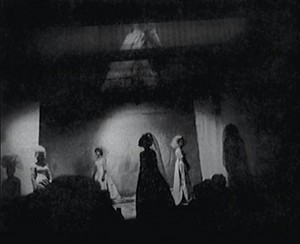Tyler Clements Adam Harden George Hull Gregory Mania Nelesi Rodriguez
Urban Screens as community platforms: A reflection on the boundaries, the potential, and the challenges of this medium
Probably the first image that comes to mind when one hears the expression “urban screen” is one of Times Square: intrusive, stereotypical, offensive, manipulative, superficial, and wasteful. Yet even if the Times Square-style spectacle is indeed one example of urban screens, this medium needn’t be reduced to an advertising tool for corporations.
Susa Pop, urban media curator and managing director of the Berlin Public Art Lab, gave a presentation in an Understanding Media Studies lecture at The New School, in which she talked about urban screens as community platforms. She defines these devices as “membranes that are between the urban space and the digital world”. She also identifies the phenomenon as an index of gentrification – they tend to appear with commercial development and increasing property values — a situation that raises questions about the relationship between these projects and the communities in which they are created. According to Susa Pop, these “membranes” can have different sizes and looks. She categorizes the display`s formats as follows: Urban Screens (i.e. billboards), Media Façades (i.e. projections on buildings walls), Media Architectures (using not only the wall, but the whole building as structure for projection and interaction), and Urban Media (i.e. mobile cellphones).
Nicholas Mason Iimani McKnight Jewel Li Ryosuke Date Sean Landers
Joanna Arcieri Adam Bastien Rachel Mossberg Marquis Wimberly
(best if viewed full-screen)
Shannon Smith Tanya Somasundaram Sarah Cerio-Stokes
Peace Is Not “Kumbaya, My Lord”
In today’s society the phrase “world peace” is often associated with individuals who do not have a clear understanding of the complexity it holds. Frequently, this phrase is used as an advertisement to gain support. For instance, a woman competing in a beauty pageant will use the phrase as a generic answer in the hope of gaining votes. However, when the notion of “world peace” is referenced by Jody Williams and Mary Wareham, it has nothing to do with the idea of utopia; as Williams said during her famous TED talk, peace is not “Kumbaya, my Lord.” Instead, it has everything to do with actions of hard work and commitment. On October 20, 2014, in an Understanding Media Studies lecture, Williams and Wareham spoke about their tireless efforts to spread peace throughout the world.
Abstract: This talk will consider “Selma Last Year,” a largely forgotten multimedia installation that took place during the Winter of 1966 as part of the New York Film Festival’s fleeting interest in Expanded Cinema. A collaboration between the street theater producer Ken Dewey, Magnum photojournalist Bruce Davidson, and Minimalist composer Terry Riley, this groundbreaking media installation juxtaposed large scale projected images, an immersive audio collage, small scale photographic prints, 16mm documentary film, and a delayed video feedback loop to create a series of intentionally disjunctive environments.
